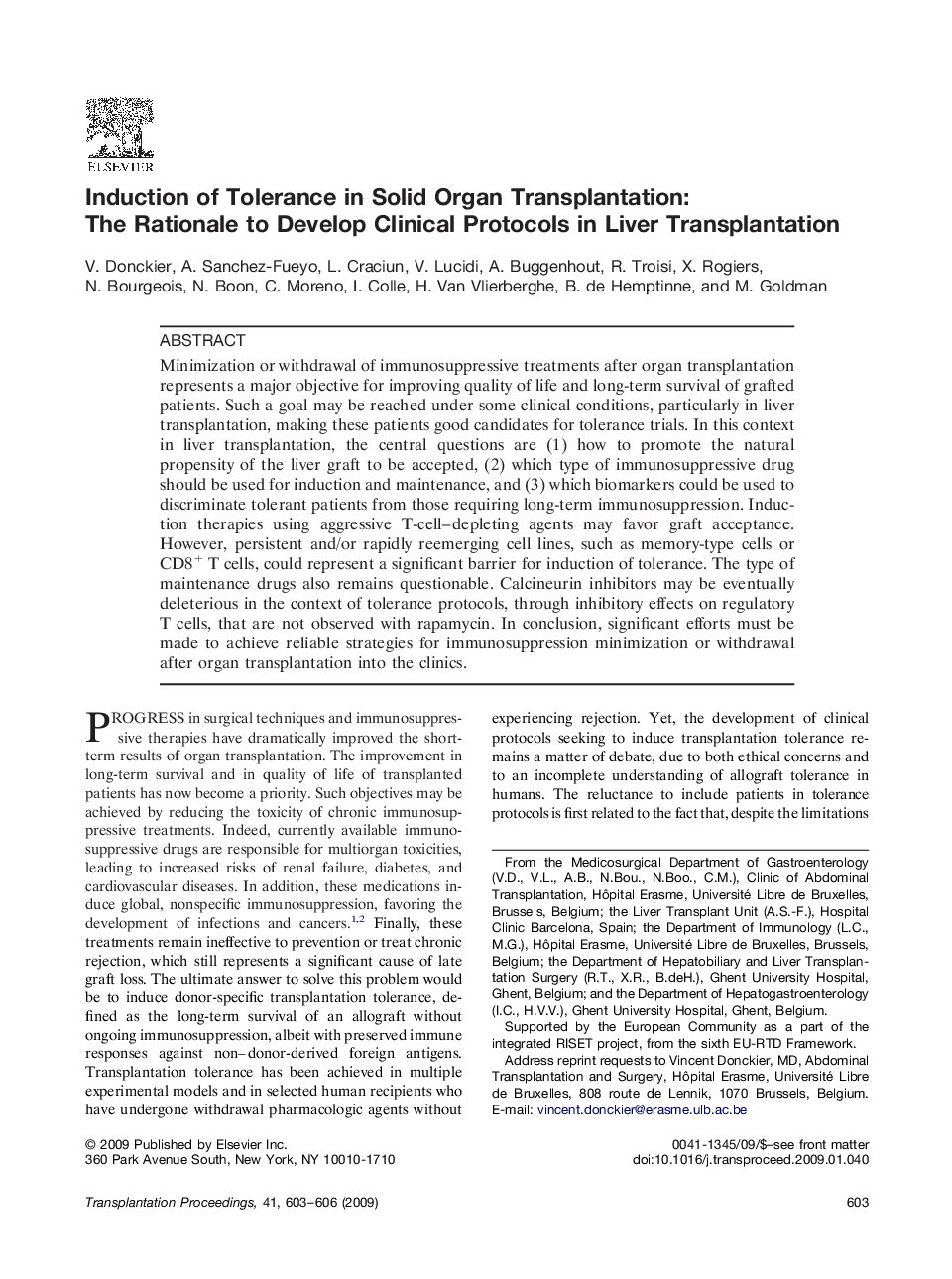| کد مقاله | کد نشریه | سال انتشار | مقاله انگلیسی | نسخه تمام متن |
|---|---|---|---|---|
| 4259529 | 1284573 | 2009 | 4 صفحه PDF | دانلود رایگان |

Minimization or withdrawal of immunosuppressive treatments after organ transplantation represents a major objective for improving quality of life and long-term survival of grafted patients. Such a goal may be reached under some clinical conditions, particularly in liver transplantation, making these patients good candidates for tolerance trials. In this context in liver transplantation, the central questions are (1) how to promote the natural propensity of the liver graft to be accepted, (2) which type of immunosuppressive drug should be used for induction and maintenance, and (3) which biomarkers could be used to discriminate tolerant patients from those requiring long-term immunosuppression. Induction therapies using aggressive T-cell–depleting agents may favor graft acceptance. However, persistent and/or rapidly reemerging cell lines, such as memory-type cells or CD8+ T cells, could represent a significant barrier for induction of tolerance. The type of maintenance drugs also remains questionable. Calcineurin inhibitors may be eventually deleterious in the context of tolerance protocols, through inhibitory effects on regulatory T cells, that are not observed with rapamycin. In conclusion, significant efforts must be made to achieve reliable strategies for immunosuppression minimization or withdrawal after organ transplantation into the clinics.
Journal: Transplantation Proceedings - Volume 41, Issue 2, March 2009, Pages 603–606